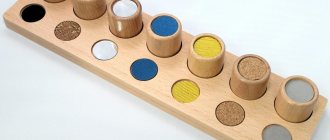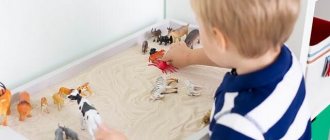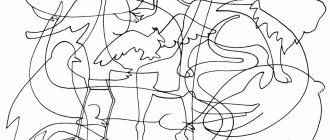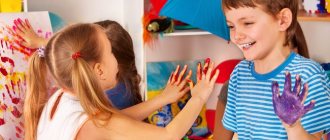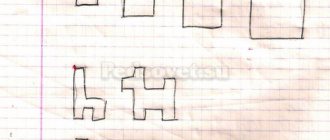What are fine motor skills?
Fine motor skills are the ability to make precise small movements with the fingers and hands. The work involves the muscular, nervous, skeletal and often visual systems.
The term “dexterity” is often used for the concept of “fine motor skills.” Movements can be simple (grasping a toy) or complex (writing and drawing). Fine motor skills are very important in the harmonious development of a child.
From birth to 2 months
At this age, movements are subordinated to innate reflexes. The baby moves his fingers involuntarily, that is, for no reason or in response to external stimuli. For example, if you press your fingers on his palm, he will clasp them quite tightly.
This is the so-called “grasping reflex”, which was inherited from our ancestors when baby monkeys were held on their mother’s fur by grasping. Normally, by the end of two months, the baby is already reaching out to things with his hands and can grab you or himself by the finger.
From 2 to 6 months
During this period, primary coordination begins to form - the child connects vision to hand movements. This realization is a great achievement. The baby is quite capable of grabbing objects that are in his field of vision and skillfully putting them into his mouth. He can look at his hands for a long time.
Hands in the mouth are an attempt to get rid of the itching when teeth appear. The child does not yet know how to sit, but you can let him touch different surfaces to develop tactile sensations.
From 6 to 12 months
In the second six months of life, the child’s vision improves and the muscles become stronger. The assimilation of grip begins - first with tweezers (fingers with a pinch), then with pinch (thumb and index are used).
The child tries to transfer objects from hand to hand. If he wants to get something, but cannot reach it, he pulls out his pen and points at the thing with his finger.
At 8–12 months, the baby is able to pick up objects and put them in a box. As a rule, he already uses a pinch grip for this. He can repeat the movements behind his mother, for example, if she pushes the car, he will do it too. The first interest in drawing appears, but unconsciously.
From one year to two
During this period, the level of development is already much higher - the child takes objects and studies them. He begins to distinguish between sizes, shapes and weights. Trying to dose his efforts.
At 1.5 years old he can hold a spoon in his hands and can unwrap candy himself. Trying to build a tower from several cubes.
Closer to 2 years, he no longer turns all the pages in a book at once, but can turn one page at a time. With interest, he unscrews and screws on the cap of the Agusha puree in a sippy cup package, specially designed for this purpose.
From two to five years
During this period, static grip has already been mastered, when the child grabs a thing and holds it in his hands. Dynamic skills are being studied - the ability to work with an object in the hands, for example, draw with a pencil, cut paper.
- At 3–5 years old, fine motor skills are more developed in girls, so if a boy lags behind, this can be considered the norm. Children develop self-care skills - using a toothbrush and comb. Many can dress themselves, fasten buttons, rivets, and lace their shoes.
- At 2–3 years old, a child can engage in modeling. He freely opens the desk drawers and takes out the contents. Draws simple shapes with his fingers.
- At 3 years old, a child can string beads on a wire, collect cereal with a spoon and pour it into a glass. At 3.5, he enjoys modeling, but can only make balls and sausages, draws a line without lifting his hand, knows what clasps and Velcro are.
- At 4 years old, a child traces contours and can build tall towers from cubes.
- At 4–5 years old, he colors pictures and draws with a pencil. At the same time, the drawings are more conscious - there is a pipe, windows, etc. on the house.
Print activities for visual differentiation
Find and color
In this task you need to find a fragment in the picture and highlight it with color (color it).
Find and count
Here: tasks Find and count more difficult ones.
Find the right shadow
More tasks Find the shadow
Why is it important to develop fine motor skills?
The connection between the mobility of fingers and the brain, in particular speech, was first identified by V. M. Bekhterev. “The hand is the brain coming out,” Kant also wrote.
This means that any deep psychological processes (conscious, unconscious) are always reflected in the position of the hands and gestures.
Teacher V. A. Sukhomlinsky Fr.
Such phrases are due to the fact that movements of the hands and fingers are directly related to the center of speech. Moreover, each finger has its own projection.
Important! Fine motor skills affect thinking and imagination skills and are associated with motor and visual memory. By developing it, the child becomes observant, attentive, and better expresses his thoughts and desires. Its level is one of the indicators of a child’s intelligence readiness for school.
How to develop fine motor skills in a child?
The main thing is motivation to practice. Experts have created many special games that effectively influence motor skills. You just need to take age into account. The key to success will be regular play (every day) and persistence.
Tip 1. Invite your baby to play with the sensory box
Such games can be offered when the child no longer tries to put everything that moves or is given into his mouth.
A sensory box is a simple but interesting idea for a child. Take a large container or basin, fill it with clean sand or cereal and bury several small objects in it - pebbles, cones, figurines, etc.
A child up to one year old will happily dig into the litter, bury and dig up toys. If he gets bored with this, you can make a vegetable garden in a basin: beds and plant acorns or twigs in them, put figures of animals, people, houses, cars.
Tip 2. Make a busy board for your baby
This type of activity is suitable for children over 1 year old. A business board is any plywood or furniture board on which various buttons, levers, switches, latches, hinges, wheels, shoe Velcro are attached, that is, everything that can be touched, pressed, pulled, twisted, etc.
If, when you press the button, a light comes on or a sound appears, there will be no limit to your delight. But all devices should not be sharp or dangerous.
You can also glue small toys to the table/board yourself using tape or plaster and ask your child to free the captives from captivity.
Tip 3. Paint with finger paints
This activity is suitable for babies over 1 year old, but if the child is interested, you can start earlier. It is still difficult for a baby to use brushes, but there is no need to put off painting for this reason.
Special finger paints are now sold in stores: even if the baby swallows a little dye, there will be no harm. By the way, they are tasteless.
You can make finger paints yourself, but they are duller and do not wash well. For preparation, use salt (it will make the paint tasteless), flour or starch for thickening, and vegetable oil. “Edible paints” can also be made from jam, jam, mustard, and ketchup.
The baby will be happy to first study the paint, try to see his handprints and fingerprints on the cardboard, and then eagerly begin to draw lines and circles.
At 3–4 years old, children already depict cars, the sun, a house, etc.
Tip 4. Look at what educational toys are in children's stores
In stores, do not choose dolls for girls and shooting games for boys, but take care of the usefulness of the toy for fine motor skills. Believe me, this is also a very interesting thing. Give preference to this.
For children under one year old, stretchers with bright pictures or figures, musical toys, pendants with tactile elements - rustling, ribbed, rubber and fabric - are suitable.
As the year approaches, you can buy simple wooden or plastic cubes: move them from the box to the floor and back, stack them on top of each other - build a house. Also suitable are toy cars that can be pushed, and shaped toys in the shape of animals made of different materials.
You can try wrapping toys in paper and inviting your child to unwrap them.
Toys from one to three years:
- Pyramids - they are so varied in shape that you can find one for every taste: round, square, triangular, etc. And if you also buy knockers with a hammer, bodyboards with pullers, the joy will go off scale.
- Beads that need to be collected by size, color or pattern.
- Sorters with large parts, games with clothespins, kinetic sand.
- Massage balls for rolling on the hand, tactile and ribbed tracks.
Over the age of three, children can already trace drawings, shade and paint, and repeat simple shapes. You can prepare your hands for writing - different simulators are suitable for this, for example, in the form of a wooden board with holes, lines, curved patterns that need to be traced with a wooden stick. You can also practice using regular stencils for drawing curved lines.
Children will have fun sorting small parts by colors, shapes and other features. Today special kits for such sorting are sold. You can also buy mosaics to assemble according to the diagrams.
A new word in the field is special children's storage facilities, for example, a cabinet for sorting garbage, household appliances, buttons, and “transport.” The game is a small chest of drawers with retractable cells and slots. The child’s task is to correctly arrange the figures and objects in them.
Designers like Lego are great for developing motor skills.
Tip 5. Teach your child to write with a pen
This can be done when the baby learns to read. Writing is also useful because it trains the hand with its dynamic grip. To encourage your child to write, tell him that he won’t be accepted into school without it (children dream of going to school and will try, although they will, of course, accept them without it too) or ask him to write a letter to Santa Claus about gifts.
Tip 6. Testoplasty
This includes modeling from plasticine, clay and salt dough. There are no limits to imagination here: you can sculpt not only sausages and balls, but also figures of people, animals, and household items.
The figures can be divided, then molded again, etc., made into flat cakes, pasted over jars, twigs, etc. etc. Lay out the given design on cardboard or plywood. Sculpt geometric shapes, numbers, letters.
Tip 7. Finger gymnastics
“Finger games” are activities in which, with the help of their fingers, children try to dramatize some kind of fairy tales and stories. Many games require the participation of both hands; they will help orient children in the concepts of “right”, “left”, “up”, “down”, etc. Each finger needs to be trained.
It is better to combine such activities with reading poetry, fairy tales, working on nursery rhymes, jokes, that is, any speech material. When listening to fairy tales, children learn with adults to portray characters, move their fingers, perform actions.
For little ones, 3-5 minutes a day is enough, after 5 years - up to 15 minutes. More details about finger gymnastics here.
Tip 8. Ball games
For a child, you can pick up a small ball with a diameter of 3–5 cm. For an adult, you need a larger one so that it completely occupies the palm, but can be comfortably grabbed with your fingers.
Children prefer bouncy, light and bright balls.
It's better to start with a massage ball. The ribbed needle-shaped surface affects the nerve endings, activating blood circulation.
Achieved effect:
- encouragement to communicate;
- accuracy of movements in terms of strength, dexterity and eye;
- reaction speed and muscle strength.
Tip 9. Graphic tasks
Graphic skills are taught already in kindergarten during fine arts classes, but they can be supplemented at home. This activity helps to better understand the width and length of the sheet and prepares the child’s hand for learning to write.
It is better if the tasks have a figurative and semantic load. For example, drawing waves, rainbows, puffs of smoke, fish scales. Children willingly fill in the missing details of flowers and objects, trace patterns, and color the outlines of images and pictures in albums.
Experience in graphics is gained by performing various hatchings, copies of drawings obtained by tracing contours along dots or dotted lines, or patterns along cells. At the same time, the child learns to understand the terms “top-to-bottom” and “left-to-right”, to stroke evenly without spaces, without going beyond the outline.
Neuromotor: simple exercises
The exercises are presented in the form of sheets of paper divided into two equal halves. The same pictures are shown on both sides, but their arrangement is not symmetrical.
The task is to show the same drawings with both hands at the same time. The task is suitable for very young children, but it is not as simple as you might think!
Didactic toys and their role in the process of working on motor skills
Any educational toy is designed for learning, but it must be colorful, attracting attention and the desire to play with it.
TOP 10 most popular educational toys for fine motor skills:
- Educational mats. They have different surfaces: “grass”, “thorns”, “hard stones”, “soft stones”, “cones”, etc. The child will also be interested in musical rugs, where steps and paths are drawn. For older children, you can find rugs that fit together like puzzles. They often have letters or numbers on them.
- Figures on magnets. The surface of the refrigerator is a wonderful and favorite “field of action” for a little explorer. There are many refrigerator magnets; you can choose them according to your child’s age. Very young children will begin to develop the skill of moving magnets and learning the names of animals. Older children are interested in learning letters and numbers, building syllables and words.
- Play dough or polymer clay. Here the child expresses himself. Modeling massages the fingertips, improves tactile sensitivity, and develops imagination. A child learns to sculpt geometric figures. It is not recommended to give regular plasticine to small children; a special one is sold for them - “modeling dough”.
- Kinetic sand. Consists of quartz sand and synthetic additive E900. It is absolutely safe, more flexible than usual, does not dry out and does not stick to your hands. You can use it to build figures, castles and much more. Sand comes in different colors.
- Easels and drawing boards. All children love to draw, regardless of skill. There are 2-in-1 easels with a chalk board and a magnetic board on which you can draw with felt-tip pens and immediately erase them.
- Mushroom screw. A very simple toy on which you can trace the entire process of screwing a mushroom with a screw head into a leg with a hole. At the same time, manual dexterity is perfectly trained, and the muscles of the hand and wrist are strengthened. For older children, you can buy construction sets where you can assemble cars, houses, airplanes and much more using small bolts and nuts.
- By the age of 3, mosaics are of interest. To begin with, the child needs to be shown how to build a house or a flower; in the future, he will delight you with his own inventions, which at first may not represent anything specific. You can add puzzles. Start with a small number of elements (from 6 pieces), large in size.
- Laces. They help develop perseverance, logic, and improve the eye and flexibility of the hand. You can start after a year, for example, putting multi-colored pasta on a thread or wooden toys, sewing on a button (with a wooden needle), trying to lace in different ways (stitches, crosses).
- Lego type constructor. This toy delights kids of any age. There are many benefits from it - it trains modeling and design skills, creativity, memory, observation and attentiveness. The game is bright and attractive. Construction is the easiest way to develop a child’s spatial thinking, motor skills, creative abilities and voluntary actions. The Lego collection has a variety of models - from fire engines and ambulances, boats to entire islands and cities.
- Finger Theater. This toy will help develop all the fingers on both hands, strengthen the hand (which prepares for writing), improve imagination, thinking, memory, stimulate the speech apparatus, and help better navigate space.
As you can see, there are a huge variety of games, toys and tasks for developing fine motor skills in children. Remember, the more developed the hands, the smarter your child is.
When getting to know the world, the baby works, and does not passively contemplate. With this he lays the foundation for his first knowledge. Do not scold him when he fails, and do not use him as an example for others. He will succeed too.


